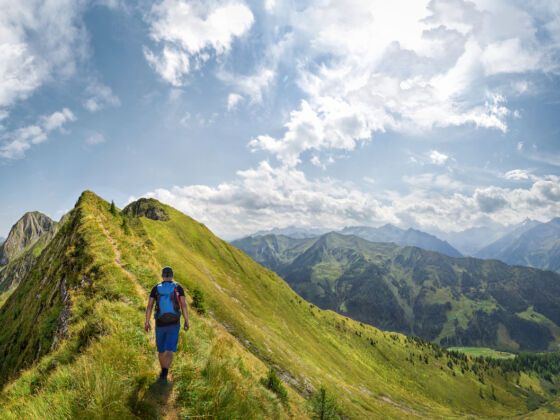WHEN I WAS 10, my family went for the usual Settimana Bianca, or ’White Week’, the common Italian name for the time of year dedicated to skiing. Within an hour of leaving Trieste, the highway began inching quickly up the outskirts of the Alpi Carniche. Bad Kleinkirchheim in Austria is on the opposite side of this mountain range and has been a recreation area since the 11th century. It’s a stone’s throw from the border. The road there is filled with hairpin turns. I would spend the entire drive looking out of the window.

How Climate Change Is Transforming Austria, a Place I Love
I love the mountains. My family used to spend every other weekend on the Dolomites in summer. We placed our roulotte in a campsite not far from the mountain pass we would cross to go skiing. The dew that wet my shoes in the morning, the smell of the slim, evergreen pine trees, the fresh air and the jutting peaks are familiar and comforting to me still.
That year for Settimana Bianca, I saw few yellow, bulky snow-cannons on the slopes’ edges. Whenever it didn’t snow enough, they were there to make up for it with artificial snow. But when I was a kid, there was no need for it.
Later, at 24, I had my first conscious recognition of climate change when my family went skiing again on the Dolomites on a late winter day. Snow had fallen only higher up on the mountain peaks, and there was none in the valleys. Later that morning, the slopes’ edges were dotted with those snow cannons. In 2010, in Austria, artificial snow in the piste area reached 62% within just 10 years. If you’re a skier, you know that artificial snow feels like crystal, like dry sand it’s not compacted. It sounds different and louder than real snow, with a different ‘woosh’ sound when making a sharp turn on the skis.
I remember as a kid how we didn’t have to worry about the lack of snow, how my parents used to book the Settimana Bianca months in advance because snow on the Alps in winter was a given. But the last 20 years have had the least snowfall since measurements began 130 years ago, as stated by the Institute for Snow and Avalanche Research, arguably the leading snow science institute in the world. On top of its diminishing, snowfall trends are now inconsistent.
In 2015, I was 29 and I visited my father’s Austria home. The valley fields’ green grass contrasted with the dark green trees on the mountain slopes, an odd view since it was late December. My father had mentioned earlier that the whole Northern Hemisphere had experienced a decrease in snow cover, which we noticed because there had been virtually no snow so far in Austria that year.
A lack of snow impacts the amount of potable water for the eight Alpine countries, the environment’s overall health, pastures, heatwaves, and the economy. We didn’t really see those catastrophic effects in the valley, but it seemed to rain a lot more than usual in the Alps.
I did, though, feel on my skin the heat of the Parma 2015 summer, 2°C higher than 50 years ago, an 8.51% increase. I would change t-shirts multiple times per day, sweating profusely just from walking from shadow to shadow in the motionless hot afternoon air. The more than 80% of relative humidity in July didn’t help.
My mother grew up in Parma and remembers how summers were yes, humid, but not as hot. Nowadays, the city’s Torrente Parma (‘Parma River’) is already bone dry by early summer. Full grown trees are now visible all over the river bed because vegetation is no longer washed away. It’s a pretty sight in itself. The hotter the summer, the more air conditioning units will be installed and people will use their cars more often, my mother observed, which will increase energy consumption even more, worsening the situation. To combat this, my mother cycles to her vegetable garden each morning, where she grows produce for two families and always has more to spare. Little everyday choices like hers are small, easy, but they have a huge impact.